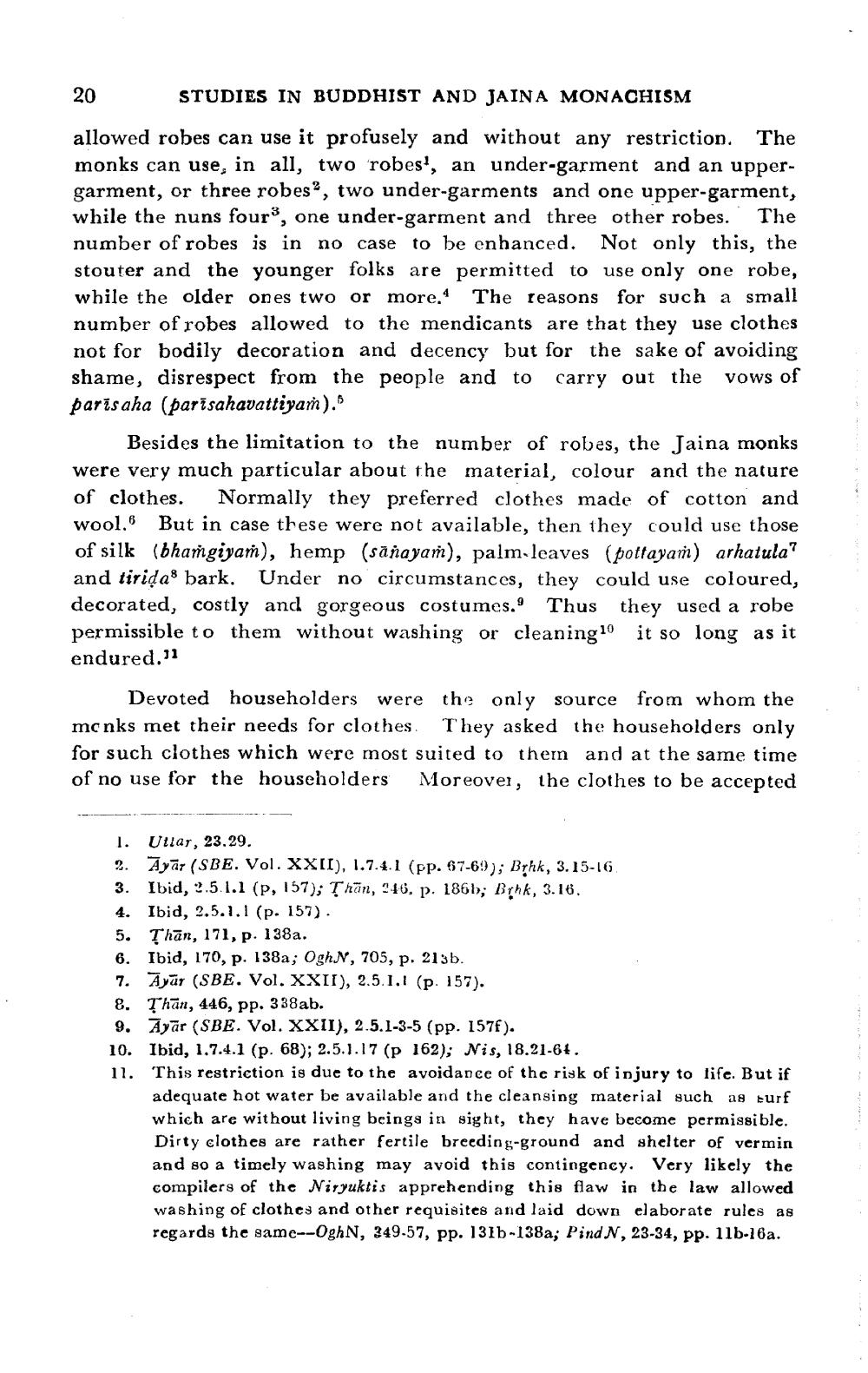________________
20
STUDIES IN BUDDHIST AND JAINA MONACHISM
allowed robes can use it profusely and without any restriction. The monks can use, in all, two robes', an under-garment and an uppergarment, or three robes, two under-garments and one upper-garment, while the nuns four, one under-garment and three other robes. The number of robes is in no case to be enhanced. Not only this, the stouter and the younger folks are permitted to use only one robe, while the older ones two or more. The reasons for such a small number of robes allowed to the mendicants are that they use clothes not for bodily decoration and decency but for the sake of avoiding shame, disrespect from the people and to carry out the vows of parisaha (parisahavattiyaṁ).
Besides the limitation to the number of robes, the Jaina monks were very much particular about the material, colour and the nature of clothes. Normally they preferred clothes made of cotton and wool.6 But in case these were not available, then they could use those of silk (bhamgiyam), hemp (sanayam), palm leaves (pottayam) arhatula? and tirida8 bark. Under no circumstances, they could use coloured, decorated, costly and gorgeous costumes. Thus they used a robe permissible to them without washing or cleaning 10 it so long as it endured."
Devoted householders were the only source from whom the monks met their needs for clothes. They asked the householders only for such clothes which were most suited to them and at the same time of no use for the householders Moreover, the clothes to be accepted
1. Ullar, 23.29. 2. Ayar (SBE. Vol. XXII), 1.7.4.1 (pp. 67-69); Brhk, 3. 15-16 3. Ibid, 2.5.1.1 (P, 157); Thān, 246, p. 186b; Brhk, 3.16. 4. Ibid, 2.5.1.1 (p. 157). 5. Thān, 171, p. 138a. 6. Ibid, 170, p. 138a; OghN, 705, p. 213b. 7. Ayar (SBE. Vol. XXII), 2.5.1.1 (p. 157). 8. Thān, 446, pp. 338ab. 9. Ayar (SBE. Vol. XXII), 2.5.1-3-5 (pp. 157f). 10. Ibid, 1.7.4.1 (p. 68); 2.5.1.17 (p 162); Nis, 18.21-64. 11. This restriction is due to the avoidance of the risk of injury to life. But if
adequate hot water be available and the cleansing material such as surf which are without living beings in sight, they have become permissible. Dirty clothes are rather fertile breeding-ground and shelter of vermin and so a timely washing may avoid this contingency. Very likely the compilers of the Niryuktis apprehending this flaw in the law allowed washing of clothes and other requisites and laid down elaborate rules as regards the same--OghN, 349-57, pp. 131b-138a; Pind N, 23-34, pp. 11b-16a.




